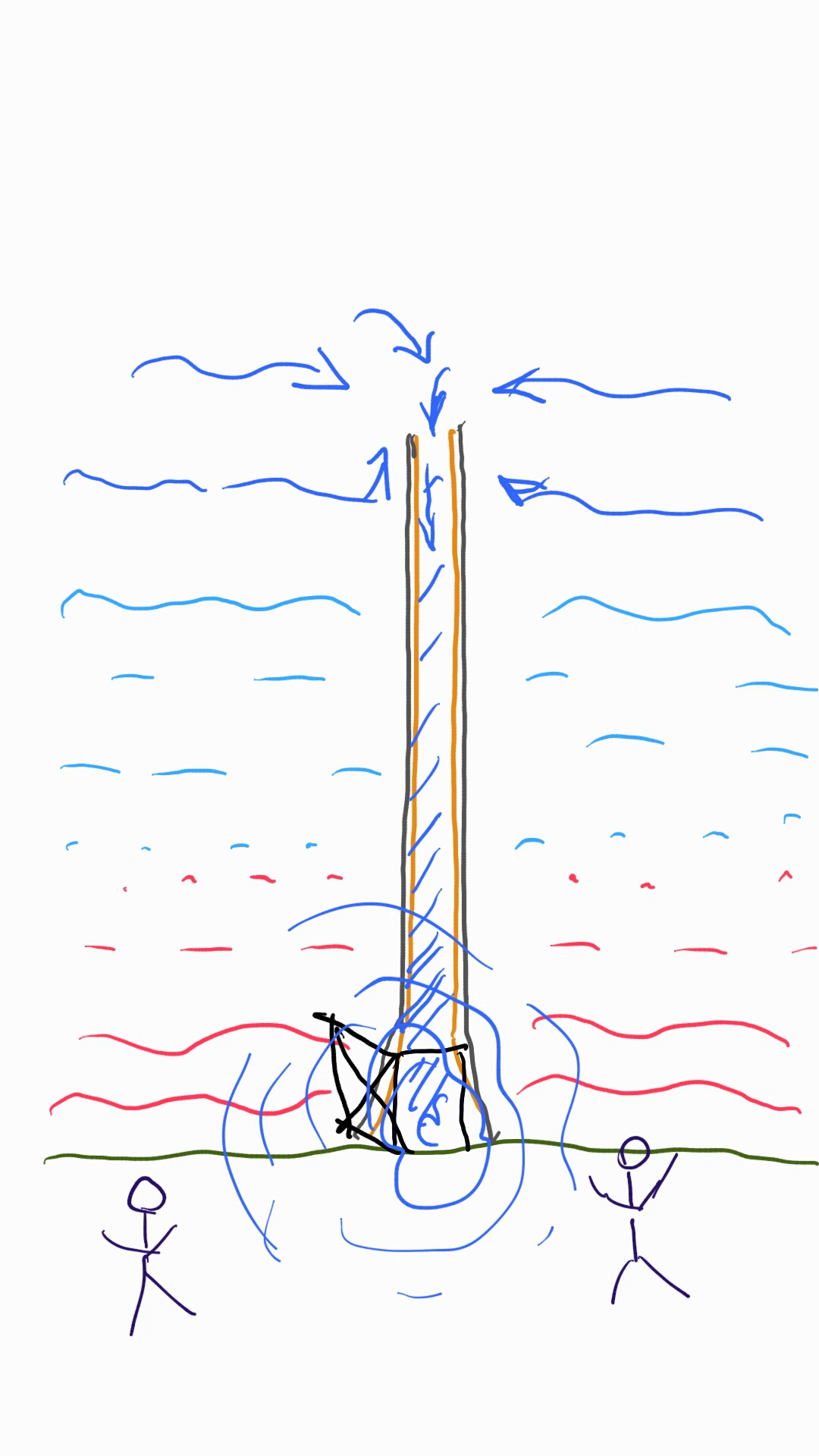If you had an insulated tube (approximate size say 15k feet (5km) tall, 50ft (15m) diameter) with the top end open and bottom end closed, would the air in the tube eventually become as cold as the one at 15k ft?
If so, (or if we manage to cool the air inside through other means), when you open the bottom end of the tube, would the cold air come rushing down sucking fresh air from the top, cool everything in its path, eventually get warmer, rise up again and continue the cicle?

We know that air gets colder as it rises to higher altitudes partly because it loses pressure, but the difference in pressure does not account for the whole difference in temperature. Per weather.gov, a lot of the heat from the upper atmosphere is lost to the outer space through radiation. If that were not the case, the whole atmosphere would eventually get hot.
AsThe way I see it, there is an active heater at the bottom of the atmosphere (the earth) and an active cooler at the top (the outer space). After losing the heat, the cold air would come back down, but the reason why it can't is because on its way down it is constantly being mixed with the warm air coming from bellow. The only thing the "insulated tube" would do is to give the air a free passage downwards (imho)

Picture source: https://www.weather.gov/images/jetstream/atmos/energy_balance.jpg.
- Additional thought experiment:
Say at room temp you have a small tube (1m tall), bottom closed off, with air of freezing temperature inside. When you open the bottom of the tube, the air rushes down from the tube.
If you do the same with a 10m tube, the air will come down the tube with a greater speed and force.
Would the same not be true for a 5km tall tube?
In case the 5k vertical tube works as stated above, would changing the direction and lenght of the tube to where it would go from the valley city sideways and slightly upwards up the surrounding hills and mountains through tunnels and bridges to the top of a 5km nearby mountain also work? Would the sheer lenght of such tube (hundreds of kilometers), the angle and the winding shape be an obstacle in a significant way?
